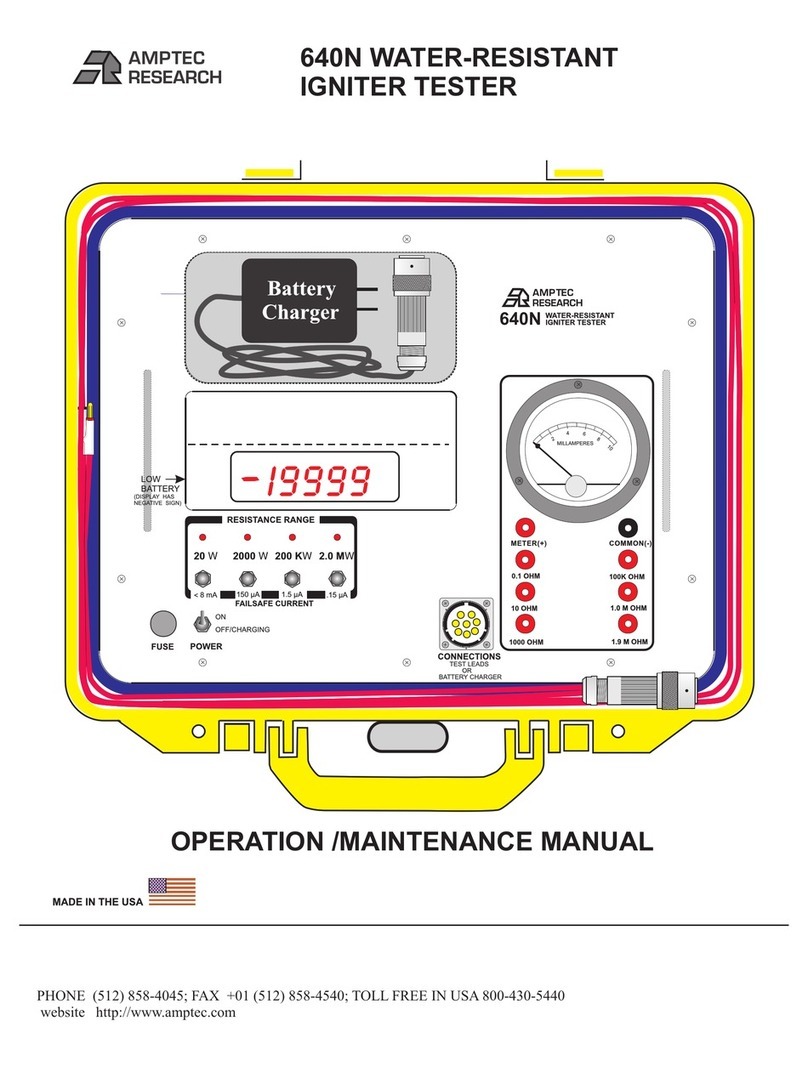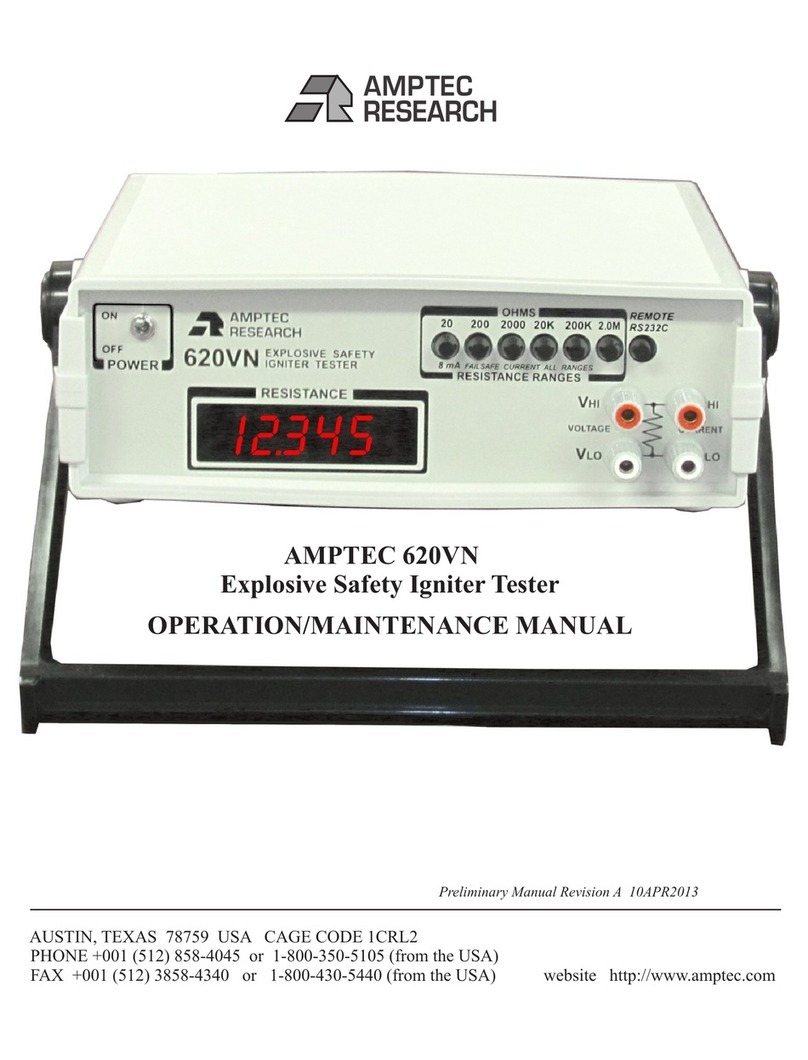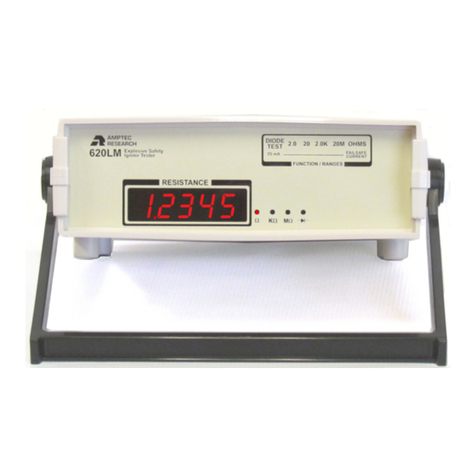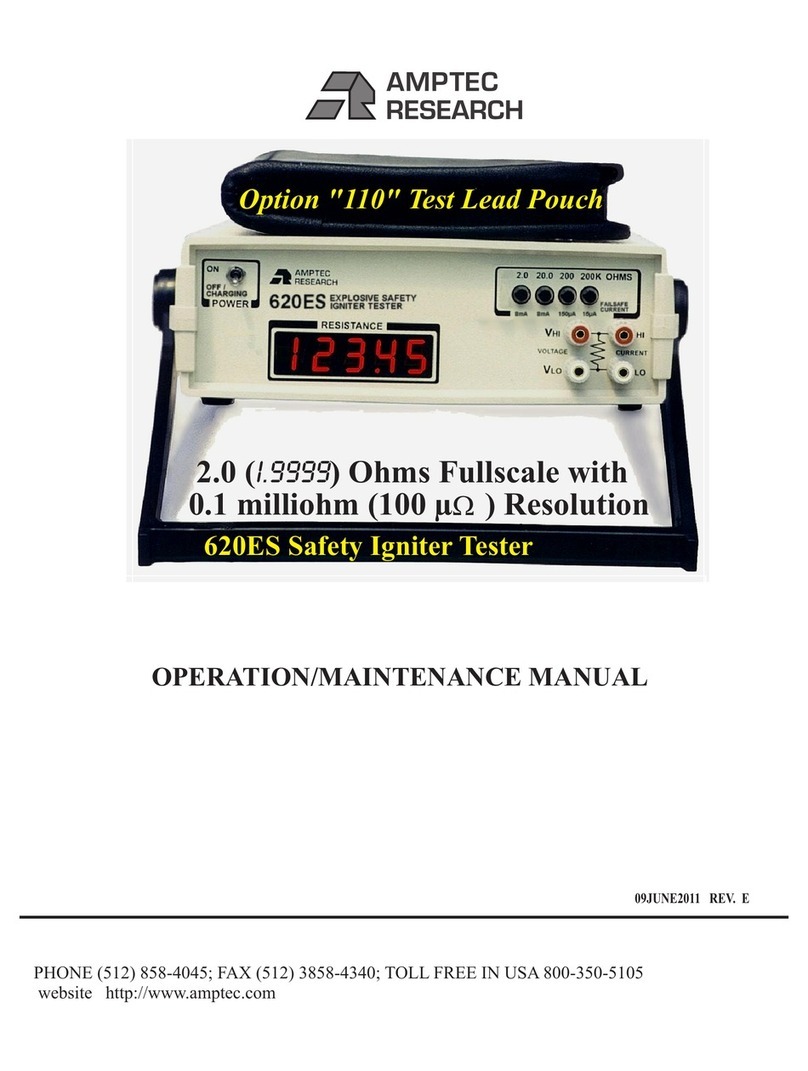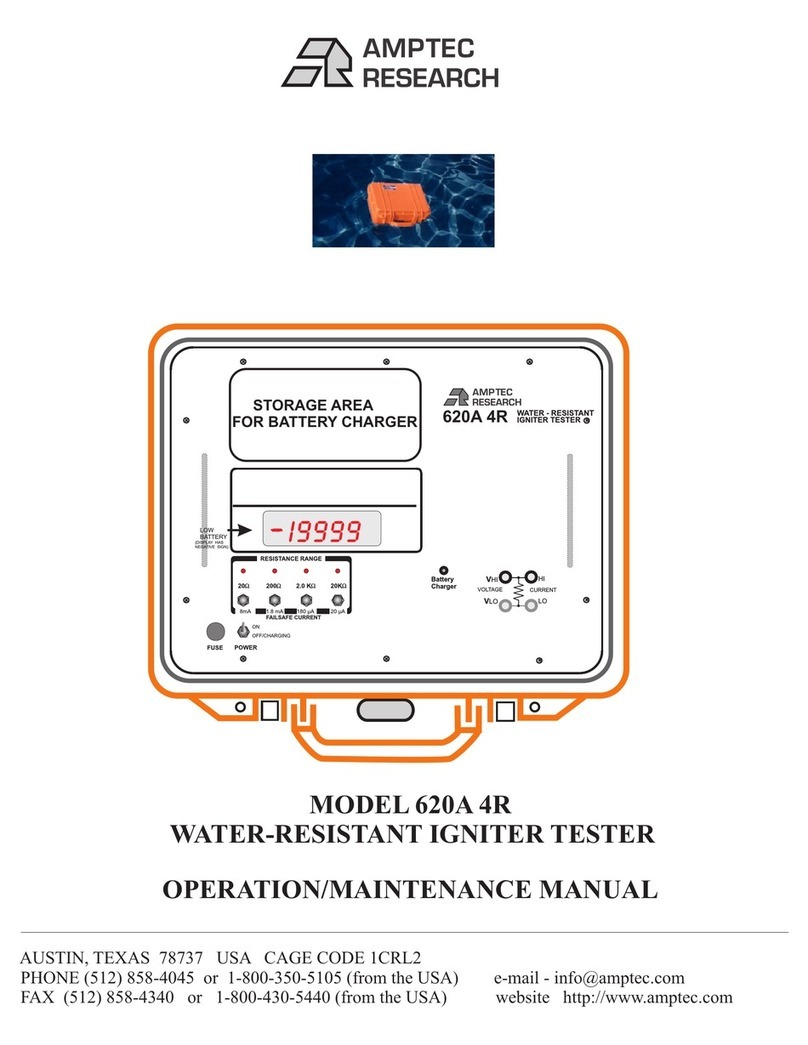
The option "630-400" can clip easily to wires,
pins, and medium size (up to ½" diameter con-
ductors). The notched connector end plugs
directly into the 630’s J1 main front panel con-
nector labeled for “test leads”.
Option 630-305: Separate/Twin Banana Plug
(Red tipped and Black tipped) Cable Set
Option "630-305" is a 48" long replacement
cable set normally supplied as part of the
AMPTEC 630BN Ohmmeter package. The
Option “640-305 has two single banana plugs
(meter and common) terminated with the
630BN style notched connector. One banana
plug is red (Voltage high and Current High) and
one banana plug lead end is black (Voltage low
and Current low) . The 4-wire configuration is
maintained up to the point of the banana plug,
eliminating most cable resistance effects.
Option 630-Plug: For Custom Test Harnesses
Option "630-Plug" is the 630Test Lead Plug
along with 8 gold pin/sockets for custom wir-
ing/missile test harness applications.
Contact the sales department at AMPTEC
RESEARCH (phone 1-800-350-5105 from
inside the USA) if you have need for a special
probe, adapter, lead set, or custom option..
AMPTEC’S engineers have helped customers
with special igniter tester accessory require-
ments. Check with our website which is
http://www.amptec.com for latest AMPTEC
RESEARCH contact (address and phone #
changes) information.
C-1. Available Accessories and Options
This manual does not list all possible
accessories that AMPTEC RESEARCH is
willing to provide as a support items for the
630BN Igniter Tester. Contact the sales
department at AMPTEC if you have a request
for an item that is not described here. Listed
below are the options available for use with the
AMPTEC 630BN Igniter Tester.
Option 630DC: Battery Charger
Option "630DC" is an AC/DC converter that
converts 115VAC line voltage to 9VDC at 1.1A.
The 630 Battery Charger is fitted with the
mating plug that connects to the unit’s J1
connector. One charger is provided as a standard
accessory with every 630ES Igniter Tester .
Replacement Batteries
The rechargeable NICAD batteries installed in
the 630ES should provide trouble-free
operation. Replacement, however, will
eventually be necessary. The 630ES uses four
1.2V cells (5.7 AHr recommended) installed in a
reusable battery box. The batteries are held in
place by a metal retaining plate. When
ordering replacement batteries, please specify
AMPTEC Stock #05-10117, quantity four (4).
C-2. Test Lead and Connector Sets
Option 630-400: 4 Wire Kelvin Lead Set
Option "630-400" is the recommended Kelvin
four wire lead set for the 630 Series Igniter
Testers ( especially for versions that have a 2
Ohm range). Option 630-300 is a shielded 48"
lead set terminating in ½" opening Kelvin clips.
A
B
C
D
E
F
H
G
A= I High
B= V High
C= V Low
D= I Low
E=
F= Ground (-)
G=Chassis Ground
H= +5 V












